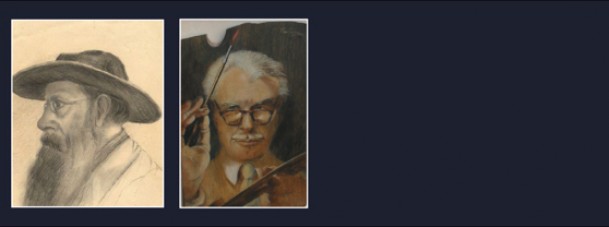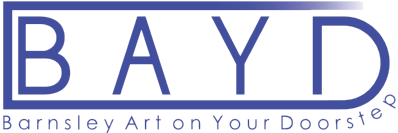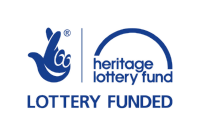The Artists
Home » The Artists

The Hidden Artists of Barnsley
Here is our list of Barnsley artists. We’re gradually adding a summary for each one so do keep checking back with us.
1. Thomas Liddall Armitage, 1855-1924
Thomas Liddall Armitage was born in Liverpool but the Armitages were a Barnsley family. They returned to Barnsley to run a family business as wine and spirit merchants and grocers. There is still an Armitage Yard in Barnsley… [Continue Reading…]
2. Edward Liddall Armitage, 1887-1967
3. Thomas Witlam Atkinson, 1799-1861
Born in Cawthorne, the son of a stone mason on the Spencer Stanhope estate, Thomas became an architect, having been the clerk of works to George Basevi (1794-1845) and worked also for the architect H.E. Kendall…
[Continue Reading…]
4. Peter Brook (1927-2009)
Known as the Pennine artist, Peter’s work is part of major collections in the UK, especially the Tate Gallery who have fifteen of his works and the Hepworth Gallery Wakefield. This is the first time his work has been shown in Barnsley. Born in Scholes into a farming family Peter’s mentor was his art teacher at Barnsley Grammar School, Norris Jubb. As with many of the artists in this exhibition, the importance of art teachers at secondary level cannot be underestimated. Norris Jubb lived on Dodworth Road and for a few years after World War 1 was resident in Uruguay so he was a man who had seen the world.
[Continue reading…]
5. Gilbert Daykin, 1886-1939
Gilbert was an artist and miner, painting atmospheric underground mining scenes. Born in Platts Common and spending his childhood in Worsborough before the family moved to Nottinghamshire when he was 13. Throughout his working life as a miner he continued to paint. Never able to afford to become a professional artist, he died in a mining accident in 1939.
[Continue reading…]
6. Barker Fairley, 1887-1986
Despite being a renowned scholar of Goethe and a distinguished professor of German, Barker had a passion for artist. He was born in Park Road Barnsley and his father was headmaster of a local school. As an adult he settled in Toronto Canada and alongside his academic career, he supported and promoted The Group of Seven, Canada’s most well-known art group. He had turned fifty when he decided to begin painting for himself. [Continue reading…]
7. Brian Fitzpatrick, 1932-1974
Brian was born in Barugh Green, Barnsley and studied at Barnsley Art School before finding a job with publishing company Bamforth’s in Holmfirth. There he designed many humorous postcards for sale at seaside resorts. He also drew many cartoons some of which were published in the Barnsley Chronicle. In 1954 he married his childhood sweetheart Joan but he died tragically early, of cancer, in 1974.
[Continue reading…]
8. Kenneth Graham, 1900-1979
Born in Leeds, Kenneth spent his early years in Barnsley. By 1925 he was employed at Wood’s glassworks at Hoyle Mill. He produced a series of pen and ink drawings of Barnsley’s old buildings, printed in the Barnsley Chronicle. In 1938 he moved to London as chief designer for Coty Perfumes. He lived in London until 1973, designing, painting, writing for journals and restoring old paintings. He retired to Suffolk where he died in 1979.
[Continue reading…] [Also see Views Of Old Barnsley…]
9. Sheila Graham
We have recently made an exciting discovery – the work of Sheila Graham, Kenneth’s daughter…
Always a strong supporter of her father’s work, Sheila herself became a designer of distinction. The only child of Barnsley artist, Kenneth Leslie Graham (1900-1979), Sheila was born in Barnsley and stayed until Kenneth took up his post at Coty Perfumes in London. Her childhood passion was the ballet, and Dame Ninette de Valois gave her permission to sketch the Sadler’s Wells Ballet Company at their rehearsal rooms and at Covent Garden. The ballet sketches and portrait of Margot Fonteyn in this exhibition form only a fraction of her ballet archive.
[Continue reading…]
10. Abel Hold, 1815-1886
Abel was from Alverthorpe near Wakefield and was trained as a house painter. Soon after this he moved to Barnsley and lived in Church Street with his young family. In 1852 they moved to Cawthorne where Walter Spencer Stanhope of Cannon Hall became Abel’s patron. He painted portraits and landscapes but is best known for his many studies of live and dead game. Many of these were exhibited at the Royal Academy.
[Continue reading…]
11. Thomas Hold, 1842-1902
Tom Hold was Abel Hold’s eldest son. After he married he moved to Pogmoor on the edge of the town. He worked as a professional artist all his life. His subjects were very similar to those of his father and his output was prolific.
[Continue reading…]
12. Benjamin Hold, 1847-1917
Benjamin Hold was one of the nine children of the artist Abel Hold. He was born in 1847 in Barnsley, Yorkshire. Unfortunately, but all too common for the time, two of his sisters died as babies but six boys and one girl survived to adulthood. Around 1852 the family moved to Cawthorne village, a few miles away. His grandparents were Wakefield Quakers but by this time it seems that his father was no longer a practising Quaker.
[Continue reading…]
13. Florence Hold, 1860-1937
Florence was Abel’s only surviving daughter and acted as his housekeeper after her mother died. She only styled herself as an artist after her father died. She produced still life paintings of flowers, game and birds’ nests. Her brother Joseph was a gamekeeper and moved around the country for his job. Florence went to live with him and they eventually settled in Halifax. She is buried in Cawthorne cemetery.
[Continue reading…]
14. John Spence Ingall, 1850-1936
Spence Ingall was a Barnsley linen designer and founder member of the Staithes group of artists, based at the fishing village near Whitby. He produced delicate impressionist water colour landscapes and travelled to Belgium, Switzerland and Assam, India. He moved permanently to Runswick near Staithes around 1900 but spent the winters in Tangier.
[Continue reading…]
15. Joseph Mellor, 1827-1888
Joseph was a linen weaver who taught himself to paint detailed rural landscapes in oils. His subjects ranged across the northern areas of Britain. Despite having a young family, he was able to make the break from weaving and become a professional artist. He settled in Leeds, then moved to Bradford where he died.
[Continue reading…]
16. William Mellor, 1851-1931
William was Joseph’s son and painted in a style very similar to his father. The family moved to Leeds when he was a teenager and he worked in the weaving industry there. Like his father, his subjects also covered northern Britain and he is particularly admired for his painting of foliage. He eventually settled in Harrogate where he died.
[Continue reading…]
17. Everett Watson Mellor, 1878-1965
Everett was the first of the Mellors who did not work in the weaving industry. He was William’s eldest son and followed the family tradition of landscape painting. Again his landscapes covered the same areas of the country and the large vistas across hills and rivers. He never married and in later life he settled in the Middlesbrough area.
[Continue reading…]
18. Ernest Moore, 1865-1940
One of the most highly regarded portrait painters of his day, Ernest Moore achieved not only a national reputation but also an international one. He was eagerly sought and commissioned as a painter of official and presentation portraits of prominent figures in local and national life; he is also known to have painted narrative and landscape subjects.
[Continure reading…]
19. William James Neatby, 1860-1910
Born on 24th May 1860 at 6 Wellington Street, William is now perhaps best known for his ceramic designs in the meat hall of Harrods store in London. His father Samuel was a clerk in the family timber merchant’s business on Wellington Street. The family business was not for William and he became an assistant to an architect, but it is not certain where. The family later moved to Hopwood Street.
[Continue reading…]
20. Edward Mossforth Neatby, 1888-1949
21. John Wood Shortridge, 1852-1921
Born on Mount Terrace, Sackville Street, John Wood painted all his life. This is the first time his work has been exhibited anywhere and we are indebted to his family in New Zealand for the loan of the works in the exhibition. John Wood’s grandfather was John Shortridge, born in Cumberland. He built the Wicker arches in Sheffield and was a Victorian industrialist on a grand scale.
[Continue reading…]
22. Lionel Percy Smythe, 1838-1918
Alice enjoyed sketching, – so we are told in a book written about Lionel. Neither she nor Lionel were born in Barnsley, so why then include Alice and Lionel in this project? A census consulted whilst involved in other research, showed Alice Smythe born in Barnsley married to Lionel Smythe, artist, in the same household in London as William Lionel Wyllie, Lionel’s half brother, who was to become perhaps England’s greatest maritime artist. How did Alice become the wife of Lionel Smythe R.A and sister-in-law of William Wyllie?
[Continue reading…]
23. John Roddam Spencer Stanhope, 1829-1908
Perhaps the most written about of the artists in the Hidden Art project, Roddam was the son of John Spencer Stanhope of Cannon Hall (1787-1873) and Lady Elizabeth Wilhelmina Coke (1795-1873) daughter of Thomas Coke, 1st Earl of Leicester. He had four sisters and a brother Walter (1827-1911) who inherited Cannon Hall.
[Continue reading…]
24. Gertrude Elizabeth Spencer Stanhope, 1857-1944
The daughter of Walter Spencer Stanhope (1827-1911) of Cannon Hall and niece of the Pre-Raphaelite artist John Roddam Spencer Stanhope, Gertrude seems to have worked closely with her uncle. She was baptised on 18th October 1857 in Cawthorne and visited Cannon Hall on many occasions. There is a small painting of her as a child, by her uncle in this exhibition.
[Continue reading…]
25. Samuel Swift, 1846-1929
Samuel Swift served an apprenticeship as a stone mason in the family business in Cawthorne village, South Yorkshire. His talents were recognised by the Pre-Raphaelite painter, John Roddam Spencer Stanhope of Cannon Hall. Roddam gave Samuel letters of introduction to Farmer and Brindley, a well-established London firm of architectural sculptors.
[Continue reading…]
26. Richard Tate, 1736-1787
He was an exhibiting amateur artist and patron of the Arts after he moved to Liverpool where he became a successful merchant. Joseph Wright of Derby lodged with his family (1768-71). Richard’s parents lived at Gawber Hall near Barnsley, his father Paul being a glass maker there. Richard’s mother was from Cawthorne.
[Continue reading…]
27. William Tate, 1747-1806
Professional artist mostly of portraits and Fellow of the Society of Artists, exhibiting in Liverpool and London. He followed his elder brother to Liverpool (see below for family details) where he became pupil and lifelong friend of Joseph Wright of Derby. After Gawber Hall, he lived in Liverpool, London, Manchester and finally Bath.
[Continue reading…]
28. Alan Wade (1927-1987)
Geof Wade, who is a son of Alan Wade, has written the following about his father: “Lifelong Barnsley resident Alan Wade (1927-1987) was passionate about recording the landscapes of his home area. From early in his life he sketched avidly and he began to paint seriously in the 1950’s. Initially he worked in oils but as he developed his own inimitable style he soon embraced the
freshness and ethereal qualities of watercolour which characterised the majority of his work.
[Continue reading…]
29. Archibald Wortley, 1849-1905
Destined for the law like his father James, Archibald ploughed a very different furrow. He was a regular visitor at the family home, Wortley Hall, especially on race weeks and friendly with many artists associated with the Hall including James A. McNeill Whistler and Sir Edward Poynter.
News Archive
- Girl with a Lamb Unveiled
- Dedication Of Nameboard At Milefield School
- We have published our book
- Dedication of a Plaque to Thomas Witlam Atkinson
- Gawber Glasshouse Information Board
- Competition Results
- Our Film
- Talks & Workshops
- Poster Competition
- Map Competition (Thomas Atkinson)
- Map Competition (Hidden Art)
- Film Competition
- Abel Hold Portrait Returns Home
News Archived
- March 2015 (6)
- February 2014 (6)
- October 2013 (1)




